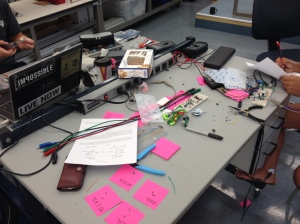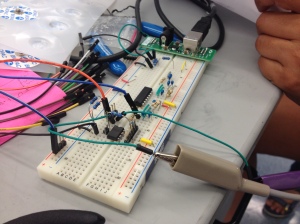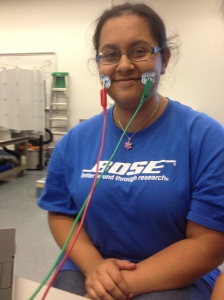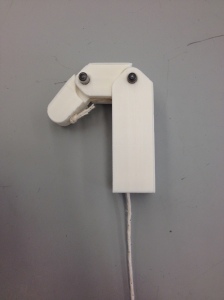This past Friday, Meghan and Myles went to the MIT Media lab to visit the Biomechatronics group, which researches and develops some of the most advanced lower-limb prosthetics in the world. More specifically we were there to see David Hill, a graduate student and friend of one of our professors who kindly agreed to give us some of his time. While there, we also got to meet and speak with Luke Mooney, another graduate student in the Biomechatronics group. David is on the physics side and specializes in the dynamics of human locomotion to develop a human running model. Luke is a mechanical engineer who is designing a lower-leg exoskeleton.
Admittedly, we did not enter this conversation with many specific questions. We were there to absorb whatever information we could from people deeply involved in the field and to establish some initial contacts, and we were successful on both fronts. In short, we got some advice on the direction of our project. In our discussion, Luke suggested three potential roads that this project could go down:
1.) Socket Design. Sockets are apparently one of the most fundamental problems in prosthetics today. People’s bodies are neither rigid nor unchanging, yet most sockets are designed as though they were. The Media Lab is actually taking steps already to improve on that by designing custom 3D printed rubber sockets with varying hardness regions, providing both maximum support and comfort for the user.
2.) Reading “Intent.” This refers to the idea that, since we are working with hands, we need a channel through which the user can signal a desired action to the prosthetic. In our case, this refers to the circuit we are trying to develop to read the electrical pulse of muscle contractions from the skin. Other potential methods that have been tried for reading intent include EEG, mechanical control, and electrode arrays implanted in the brain.
3.) Device Design. This is what most people think of when they think of “prosthetic design.” It refers to the design and construction of the device itself. Luke and David suggested that, to avoid unwieldy complexity, we consider making specialized limbs for different tasks since these can be much cheaper and easier to make while still providing enormous benefit to the user.
Though our team is still waiting until tomorrow to re-unite and de-brief on how this visit will affect our direction, this advice gives us a much more solid bearing on what is possible from the view of experts in the field.
More to come soon,
-The Prosthetic OSS Team





